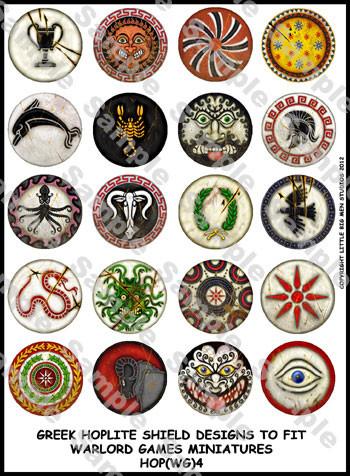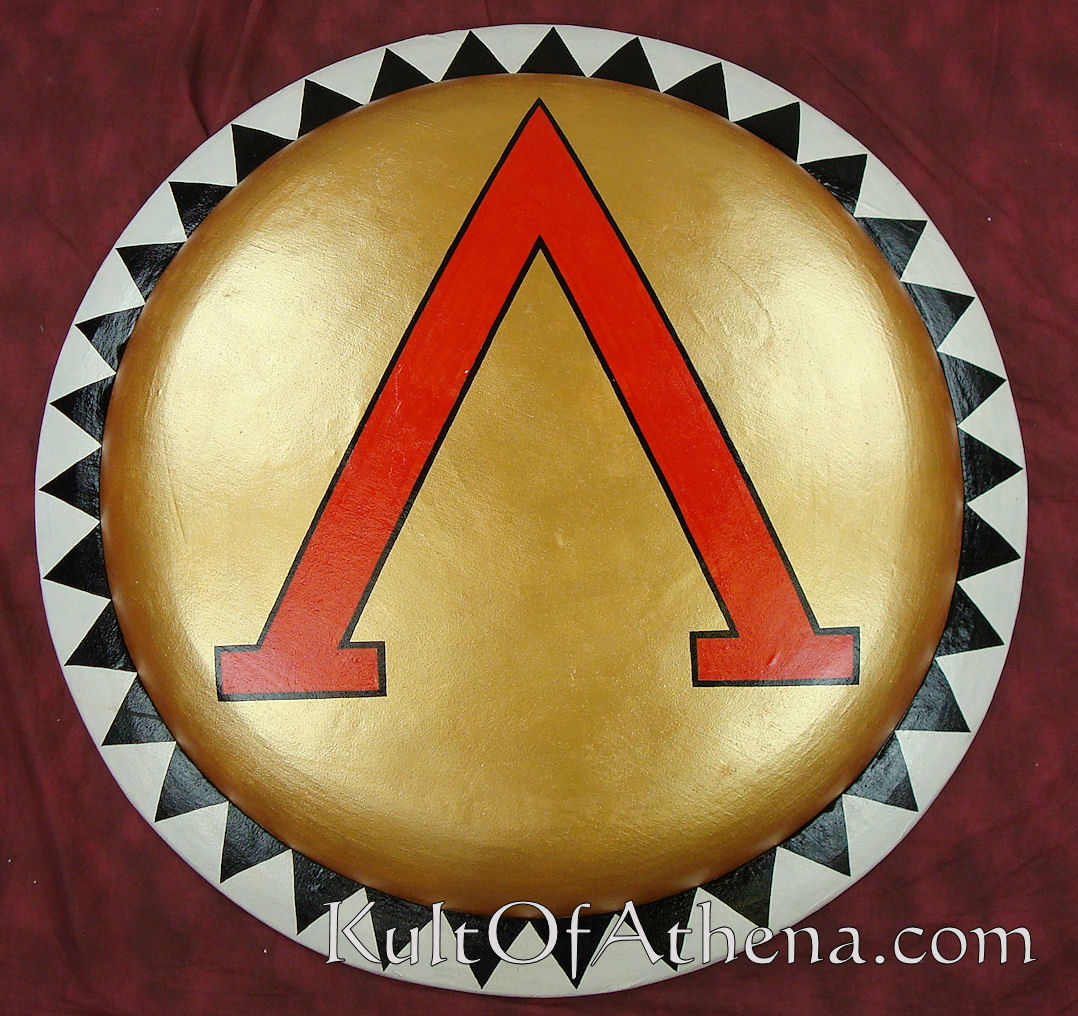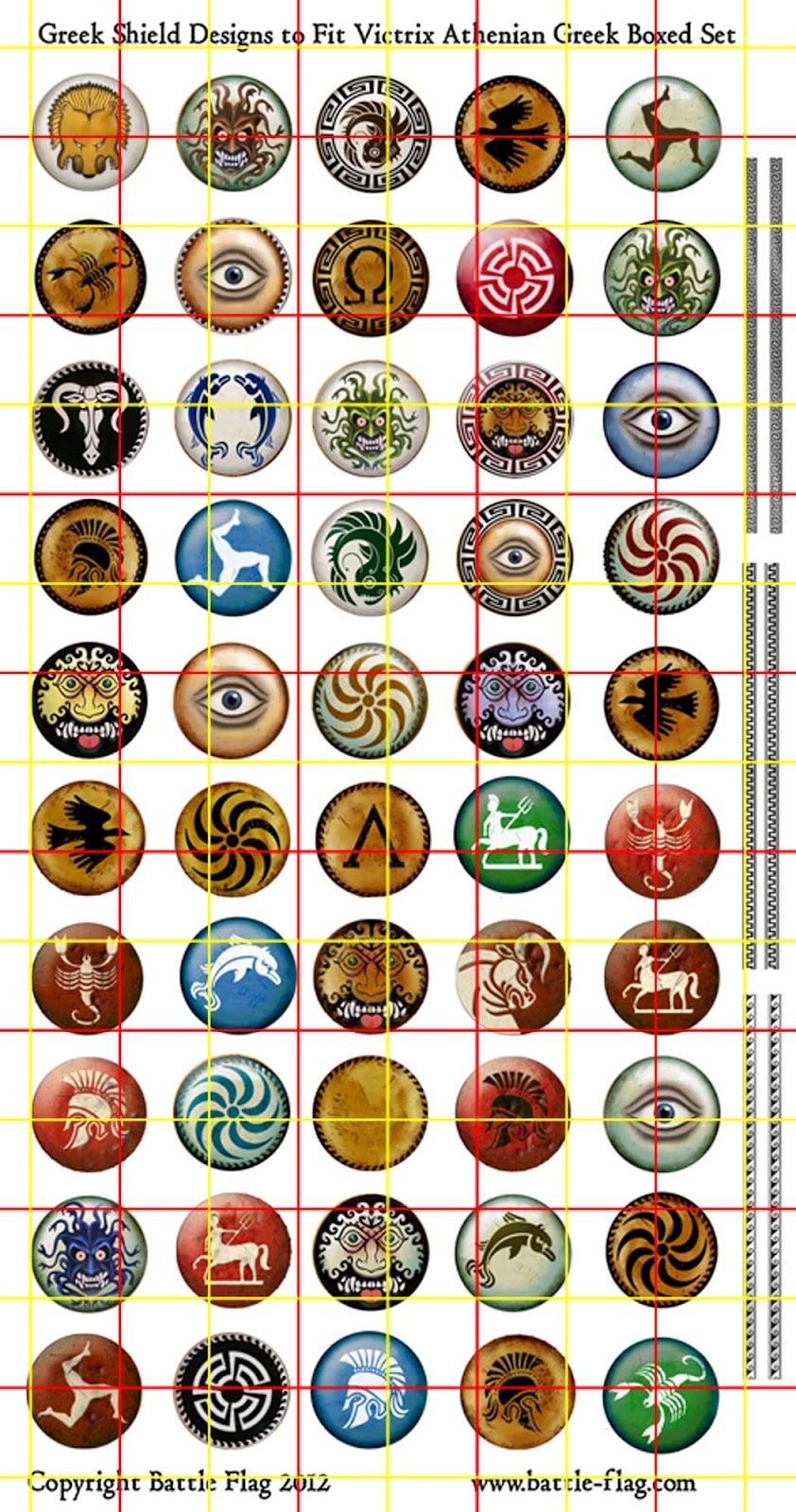

On the right is a bronze shield blazon from Olympia featuring a Gorgoneion (head of a Gorgon) in the centre, with wings around dated to the first half of the sixth century BC. On the left is the bronze facing of a shield captured by the Athenians from the Spartans at the Battle of Pylos in 425 BC (as indicated by the inscription), during the Peloponnesian War. the Panhellenic sanctuary at Olympia that were cut from sheets of bronze and featuring incised details. And while most of these blazons appear to have been painted on, we have examples of bronze blazons from e.g. But the most striking are shields that feature blazons in the shape of animals, monsters, or – more rarely – human figures. Other shields featured abstract patterns, such as spirals or a number of flat circles. Nevertheless, not all shields featured blazons: there are plenty of vase-paintings that leave the shield surface blank or painted a single colour. (Obviously, if the warrior grabbed the second antilabe, as noted earlier, the picture would be upside down.) Because of the double-grip construction, the shield is carried on the forearm in a particular way, allowing pictures to be painted on it with a clear up and down. Regardless of who invented shield blazons, they appear first on pottery of the late eighth century and are associated with round, likely Argive shields.

Herodotus credited the Carians with inventing shield blazons, but this has generally been discarded by modern commentators. One characteristic of this new type of shield is that it often sported a blazon. The porpax consisted of bronze and was used to reinforce the shield in the centre, where it was very thin. An Etruscan shield of this type, currently in the Museo Gregoriano (Vatican), still had traces of leather lining on the inside (Connolly 1998, p.

Some modern authors suggest the outside could also be protected by leather (such as ox hide), but there’s no ancient evidence for this (e.g. Sometimes, the entire outer surface was covered by a thin sheet of bronze. The rim was flat and generally reinforced with bronze. The Argive shield was made from planks (presumably mostly oak). Some modern commentators have argued that this type of shield never really existed, but I beg to differ. The scene from the black-figure vase that’s used as this article’s featured image, for example, features a so-called “Boeotian” shield: it’s similar to the Argive one, but often (not always!) oblong in shape and, characteristically, has two scallops cut from the side.

There was at least one major variant of this type of shield. This shield type is associated with the ancient Greek hoplite, but it was emphatically not primarily known as a hoplon, nor did the hoplite derive his name from this shield. Often, there was another antilabe on the opposite edge, which perhaps served as a spare. It was convex (“hollow”, as the ancient sources would have it), and featured a central arm grap ( porpax) through which the left arm was put, while the hand grabbed a handle ( antilabe) near the shield’s edge. The Argive shield was round, about a metre or more in diameter. It’s often referred to as an “Argive” shield. Towards the end of the eighth century BC, the ancient Greeks invented a large, round shield ( aspis) that was to dominate Greek warfare from that point onwards down the Hellenistic era. Judge Dredd™, Sláine™, STRONTIUM DOG™ Rebellion A/S, ©Rebellion A/S, All rights reserved.This article was originally published on the defunct Ancient World Magazine website and is now re-published here. 2000AD® 2000AD is a registered trade mark ® and © Rebellion A/S All rights reserved. K-9 image © BBC/Bob Baker/Dave Martin 1977. Cyberman image © BBC/Kit Pedler/Gerry Davis 1966. BBC, DOCTOR WHO (word marks, logos and devices), TARDIS, DALEKS, CYBERMAN and K-9 (word marks and devices) are trade marks of the British Broadcasting Corporation and are used under licence. Warlord Games, Bolt Action, Pike & Shotte, Hail Caesar, Cruel Seas, Black Powder, Black Powder Epic Battles, Black Seas, Warlords of Erehwon, Blood Red Skies, SPQR, Beyond the Gates of Antares, Gates of Antares, Algoryn, Boromite, Lavamite, Isorian Shard, Concord, Ghar, NuHu and Freeborn are either ® or ™, and/or © Warlord Games Limited, variably registered around the world.
#Athenian hoplite shield patterns free#
* Free Shipping may not apply to all products. * Warlord Medals not available until approved.


 0 kommentar(er)
0 kommentar(er)
